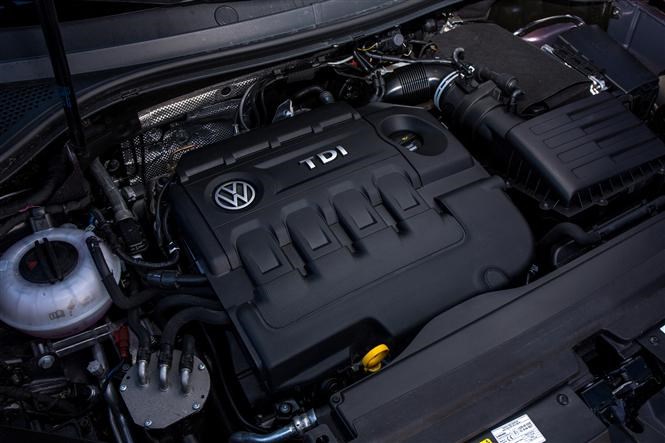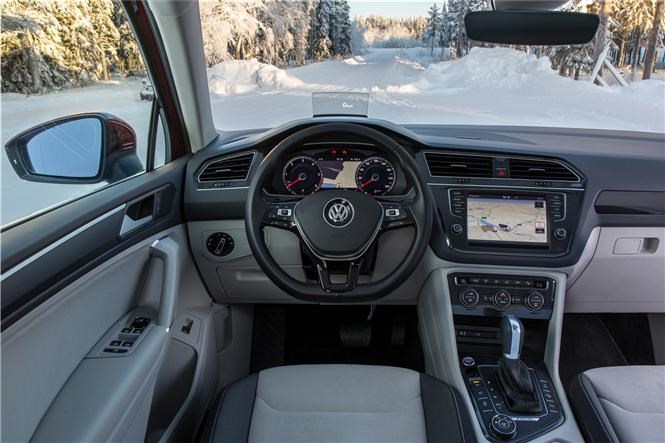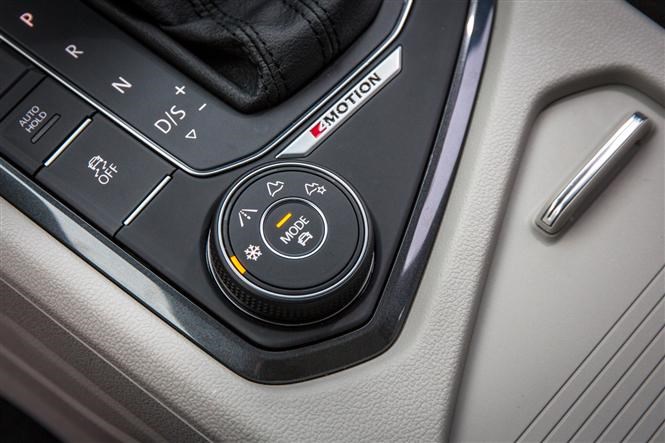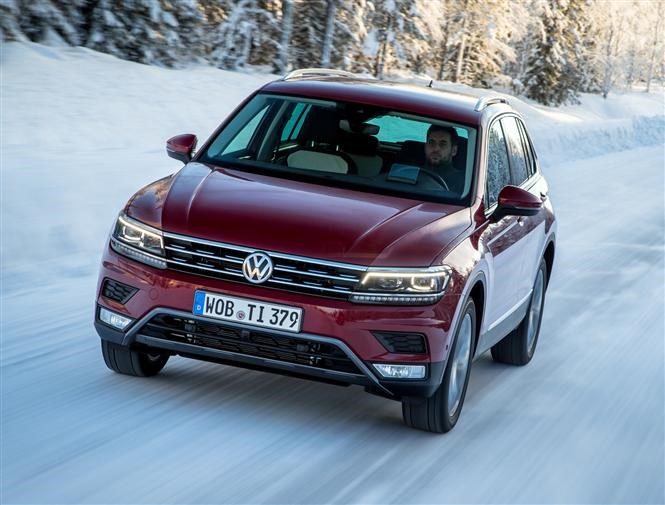The new Volkswagen Tiguan combines the interior and driving talents of a Golf with the bolder styling and practicality of a larger Passat.
It’s the first SUV built on the widely used MQB platform, which forms the basis for many cars from the two-seat Audi TT to the VW Touran people carrier.
This means it’s a better drive than the old one with a more spacious cabin, and it’ll need both to compete with the Ford Kuga, BMW X1 and Honda HR-V.
New Tiguan is lighter but bigger inside
Attracting company car drivers is a 50kg weight reduction to help keep CO2 emissions down, paired with a larger cabin and 145 more litres of room in the boot, taking the loadspace to 615/1,655 litres with the back seats up or down.

Those Golf underpinnings are stiffer too so the Tiguan can sit on more comfortable suspension without compromising its agility.
Engine line-up with plenty of diesels
The last Tiguan was diesel only but there is now a 50/50 split on its eight powerplants, although the full verdict of which ones we’ll receive in the UK hasn’t been announced yet.
They’re all turbocharged and we’ve been told that the UK should receive the majority of them. From the April launch there will be a 2-litre TDI with 148bhp or a 2-litre TSI with 178bhp. Arriving later this year is the 237bhp biturbo diesel as used in the fastest Passat.
Five other engines are on the cards
European cars will come with a choice of 1.4- and 2-litre petrols (123bhp, 148bhp, and 217bhp), and 1.6- and 2-litre diesels (113bhp and 187bhp) and whichever make it over here will be available to order from launch.

Expect a starting price around £23,000, with manual gearboxes on the lower-powered engines, optional DSGs on the middling powers and standard autos on the higher outputs.
There are no official economy figures for right-hand drive, UK spec cars, but the left-hand-drive cars we drove on a preview event in Sweden suggested provisional CO2 emissions as low as 123-125g/km for the 2-litre, 148bhp manual ,rising to 147-149g/km with four wheel drive and a DSG automatic gearbox. A 2-litre petrol with 178bhp, DSG and four-wheel drive should produce 168-178g/km of CO2.
There’s also the possibility of a GTE plug-in hybrid in the pipeline, like the corresponding Golf or Passat, which will be particularly appealing for company car drivers.
Smarter interior than the old car
The hard plastic and circular vents of the old car are gone, in favour of the Golf’s sharp lines and metal framing, with the majority of controls tilted towards the driver.

You can have the latest eight-inch touchscreen infotainment system (called Discover Navigation Pro) featuring MirrorLink, Apple CarPlay and Android Auto for full smartphone connectivity.
Digital dials on a 12.3-inch Active Info display can be specified, with a graphical rev-counter and speedometer, and a customisable centre area that can show the sat-nav or media information. Plus there’s a head up display projected onto a plastic screen above the dash.
In terms of safety tech, all cars come with city emergency braking, lane keeping assist, a system that keeps an eye out for pedestrians and cyclists, and automatic post-collision braking. You also get seven airbags, including one for the driver’s knee.
Strong off-road presence
Half of the European range comes with four-wheel drive as standard, and it’s optional on a further two engines. You get an extra 11mm of ground clearance too.

It uses an all-wheel drive system which can send nearly 100 percent of the power to the rear axle when it detects a loss of grip. This is controlled by VW’s new 4Motion Active Control which can be tuned for different driving conditions, including road, snow and off road, via a rotary toggle next to the gear shift.
If that’s not extreme enough for you then pick the special Off Road spec which brings with it a larger approach angle of 25.6 degrees instead of the standard 18.3, in case you find yourself climbing any tall hills.
The new VW Tiguan goes on sale in March/April 2016. Check back later for our full review.





